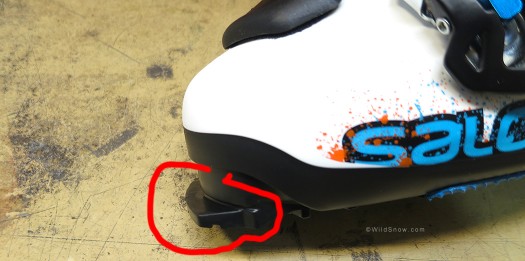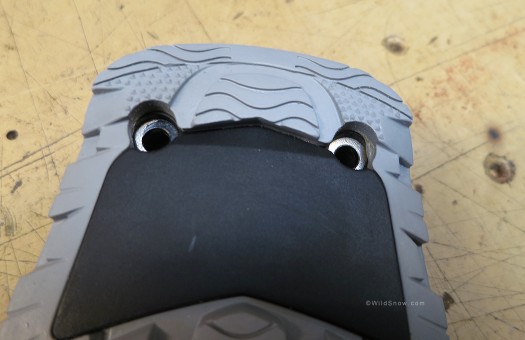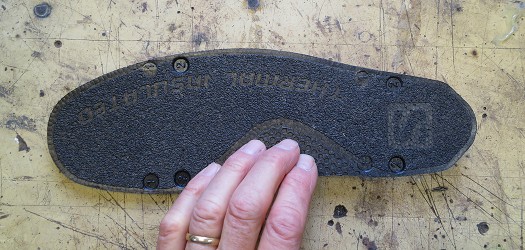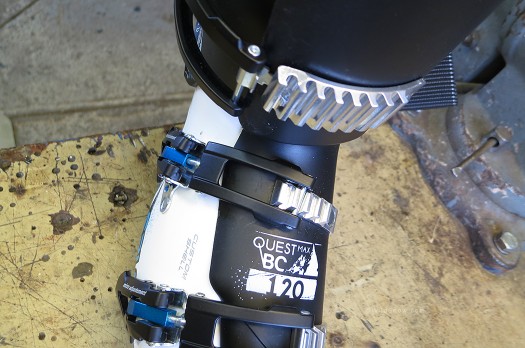Update: Well, the 2012/13 season is closing up and we’re sending our testers back to Salomon. Consensus is that Quest is indeed a fully functional alpine skiing boot that tours. In terms of flex, Salomon rates Quest as a 120. While no industry standard exists for flex ratings, somewhat of a consensus has developed and folks who ski enough different boots can compare and rate subjectively. In view of that, one tester called these a “110.” In other words, if you like a boot with some give but also alpine-like support, Quest delivers. The fit is average in the last measurement area at a claimed 98mm, but subjectively roomy. That can make for a warmer and easier to fit boot, but for some skiers the shell might not be confining enough. No problems with the tech inserts or swap soles. The liners are beautiful; light and easy to thermo mold, with a fully reinforced tongue. Only gripe about the liners is we’d prefer the stock lacing to extend to the instep so our heel is anchored for touring strides when the shell buckles are loose. Conversely, if you don’t like liner laces they’re easily removed. If you’re shopping, be sure to do a carpet test as Quest is “different” in many ways, and thus might just be the boot you’ve been looking for.
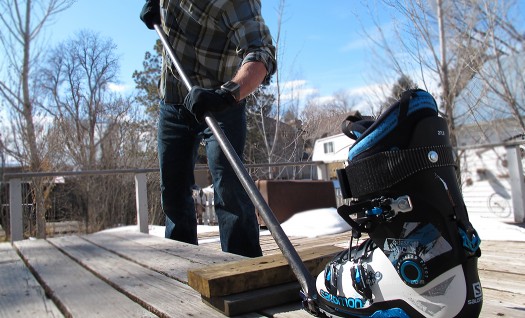
Is the tech fitting strong enough? That's going to be your first question. We set up this goof shot to illustrate that yes, per our ANSI approved crow bar test, it is strong enough. In reality, I did test with my smaller ANSI bar and the Quest fitting easily passed. Very solid. Click all images to enlarge
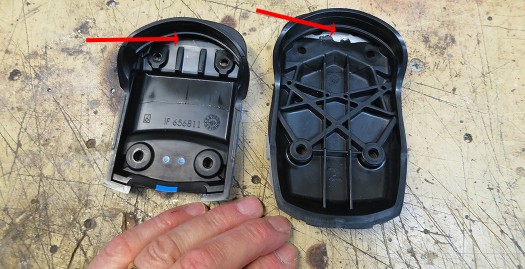
First, the sole blocks for this backcountry skiing boot. Both DIN alpine and DIN touring with tech fittings are available. The sole block keys on beefy tabs of plastic protruding from the shell. That part is solid, but the screws are small and thread into plastic rather than T-nuts. With that in mind, we don't recommend frequent swapping. Both soles are compatible with Salomon WTR (Walk to Ride) internal standard, so they'll work well with the Salomon Gurardian binding, but also appear to be totally ready for any tech binding as well as frame type touring bindings.
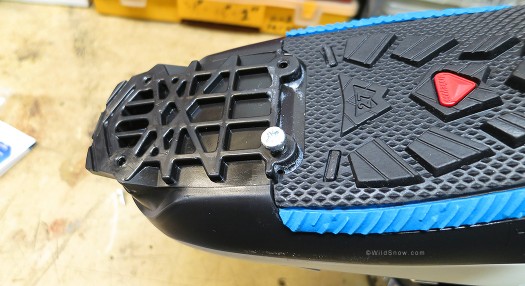
Quest sole toe without pad block installed, note the plastic protruding from front. Screw shown inserted to demonstrate fastening method. While we'd like to see T-nuts instead of threads into plastic, we're not worried about catastrophic failure as the heavily shaped plastic at the toe essentially melds the sole pad-block to the boot shell in a way that will prevent it from ever coming off while in a binding.
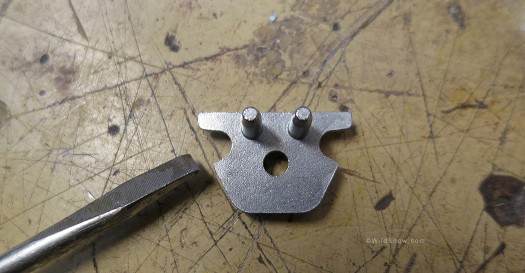
The sole blocks come with rear tech fitting uninstalled. Main reason for this is the attachment screw goes through the sole pad into the lower shell of the boot. Another reason they're separated is since the tech fitting system can not be indemnified due to no DIN/ISO standard for tech fittings, it may protect Salomon to have the user essentially modify his own boots by his choice.
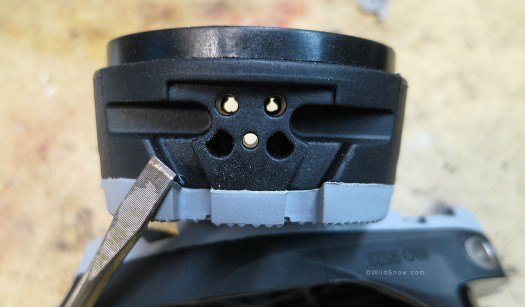
Rear sole pad block with tech fitting not installed. The block is first installed to the boot, then the tech fitting is installed with a long screw that threads through the sole pad and into the lower boot shell.
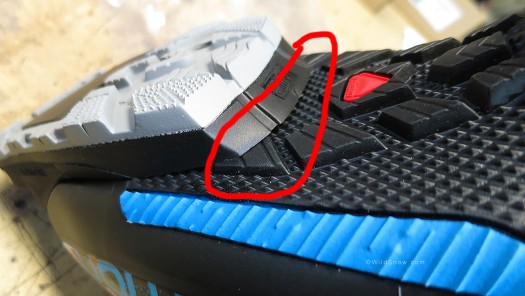
Front sole block installed, full nesting with the boot shell is blocked by the indicated small pattern lugs in the shell sole. This is easily remedied by skiving the lugs down, but is an obvious oversight. We know you'll ask: how much play between swap sole and boot shell when the boot is worked side-to-side in rolling deflection? A tiny amount is the answer. We don't feel a small amount of play here has any performance detriment (it's way less than most bindings), but movement between sole pad and boot could eventually fatigue the attachment screws. Long term consumer testing will be the only way to evaluate that conjecture. We'd have like to see T-nuts backing the fasteners, as well as better nesting of the sole block to the shell sole.
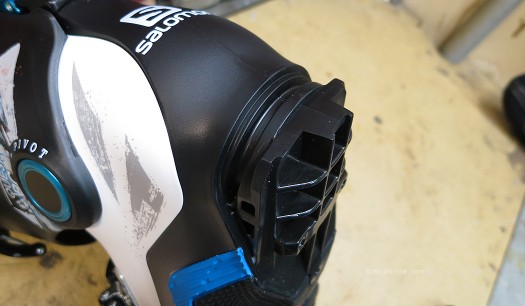
Heel of Quest shell before installing sole pad block. Note the excellent system of grooves and shapes that mate with the sole block.
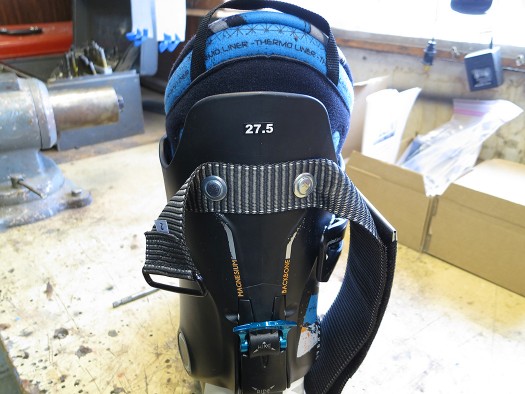
Power strap is massive and secured by two nicely washered rivets. We'd rather these were threaded fasteners, but nicely configured rivets get a hall pass.
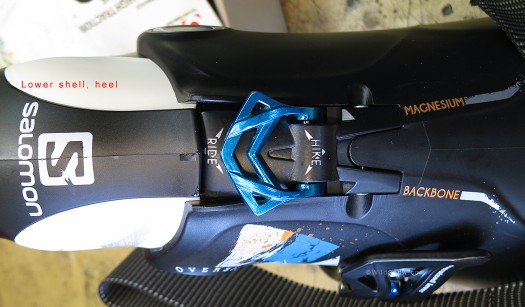
Lean lock is beefy and positive; could detect no play. Mode change is the usual flip of a tab you grab with your fingers. One lean setting at what felt like a moderate and modern angle. Lean could be added with a spoiler shim, but is not adjustable in the lock machinery.
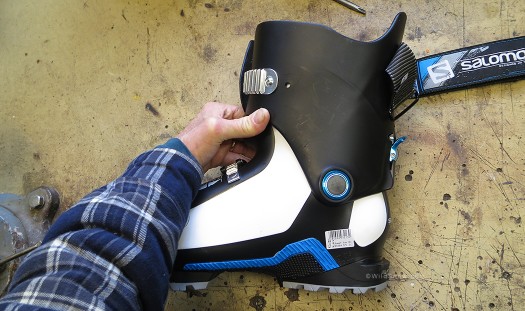
Cuff articulation is average for a beef boot, with friction during rearward movement due to the cuff rubbing and needing to spread a bit as it glides down over the lower shell at the heel. Most beef boots have trouble matching the free articulation of true alpine touring boots. We figure that's part of the deal when you rock a stiffer and more downhill oriented shoe such as the Quest.
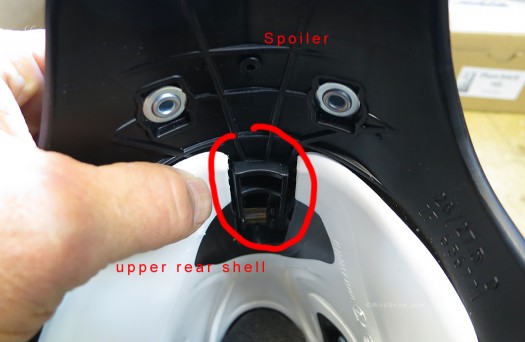
Rear spoiler mates with lower shell cuff using a molded block of plastic. Simple and effective way of preventing side play of the upper cuff and instead melding upper and lower boot into one unit. This system could be modified to introduce slightly more easy and progressive flex by removing plastic from the slot in the lower boot shell. As it is, this boot is rates as a '120' flex according to Salomon, but we'd call it a rather moderate 120. We liked the flex and would not call it ultra stiff, yet would still ski this boot as a resort shoe.
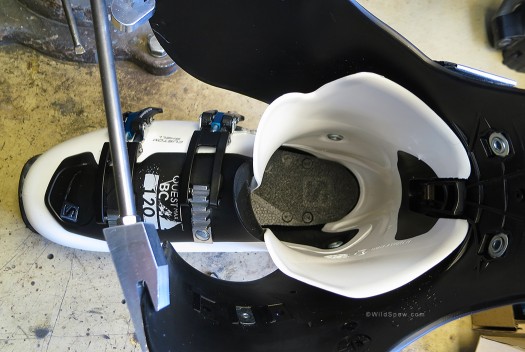
Looking down into the Salomon Quest shell, toe to left. Neither the lower shoe nor tongue extend high as with some other boot designs. Nonetheless, due to a solid upper cuff and strong latching system, the boot feels thick and tough when buckled up. Due to the overlap and un-hinged tongue at the instep along with the left-right offset of the opening, I found the Quest difficult to get into. For easier entry I would cut away some shell plastic in the instep if I made them my go-to boot. While these might appear to be an overlap boot, the lower shell is a tongue type configuration, with the black plastic as seen in the photo being the tongue, which is anchored to the side by the buckle ladders.
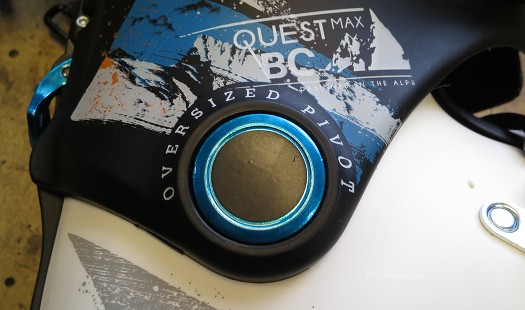
Salomon Quest BC cuff pivots are large for more surface area to prevent wear while touring. We're not sure they're any stronger than normal cuff rivets, as viewed from inside they appear to be normal diameter. A cuff alignment system is not included.
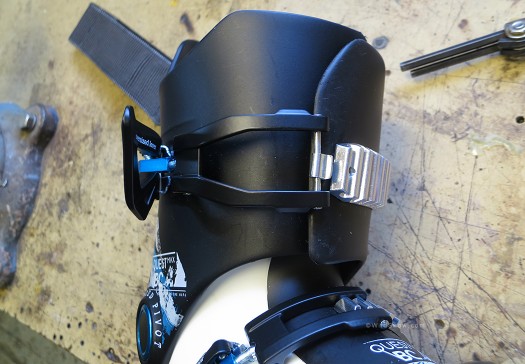
Quest sidecountry skiing boot has one oversized upper buckle. The idea here appears to be less weight and less fiddling. A touring position (shown being used in photo) is available if you need a looser cuff. Ladder distance is adjustable. All buckles are micro adjustable.
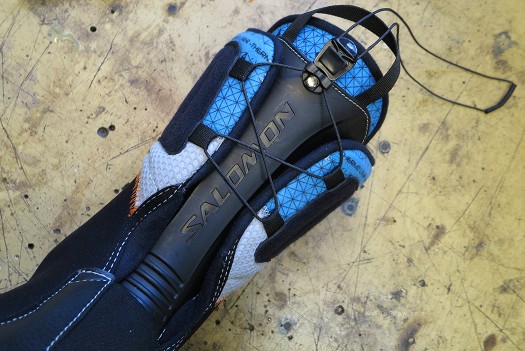
Quest liner is beautiful. Thermo moldable, reinforced tongue, laces with functional tightening system. We'd rather the laces continued down so they'd tighten the liner at instep.
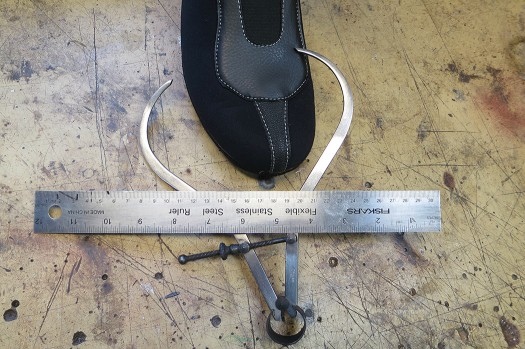
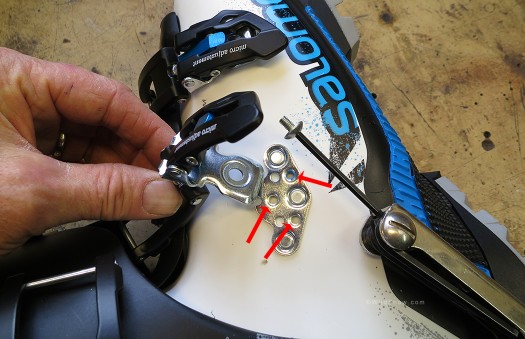
Second buckle has a delightful three-position adjustment capability. I've been repositioning my buckles for years so they grinch down better on my instep. I moved the Quest buckle to the inside position, worked well.
Summary:
I’d call this a higher volume boot with average forward cuff lean and a few innovative features. The tech fittings appear up to “standard.”
Following from a person at Atomic where they developed the tech inserts for Atomic and Salomon boots: “I’d also like to clarify a bit about our tech inserts… Currently, Dynafit has created 2 types of tech inserts — the original one, and the newer quick-step. The original design is available for anyone to use now since the patent has expired, so Atomic (shared with Salomon) has opted to create a tech insert that is 100% inline with the specifications of the original Dynafit tech insert, and therefore the same interface specifications to the TLT binding. The toe and heel inserts are made in Italy using the Lost-Wax (or Investment) casting process, which insures that the proper material hardness is the same throughout the entire piece. It is very costly but it ensures we deliver the proper safety equipment to the market…”
How stiff? I’d call the Salomon Quest backcountry skiing boot average when compared to the new crop of beef boots. I liked the flex as I don’t prefer boots that feel like I’m standing in buckets of cast concrete. The adjustable second buckle position is innovative. Lack of cuff “cant” alignment is surprising for a boot that can so obviously cross from backcountry, through sidecountry, to alpine. Worth a look if you’re shopping and don’t forget that they do have the Salomon “WTR” sole configuration that’s guaranteed to work correctly with Salomon’s Guardian frame binding.
Weights:
One boot with liner, size 27.5 BSL 315: 68.3 ounces, 1938 grams
One shell, no liner, same size: 57.4 ounces, 1628 grams
WildSnow.com publisher emeritus and founder Lou (Louis Dawson) has a 50+ years career in climbing, backcountry skiing and ski mountaineering. He was the first person in history to ski down all 54 Colorado 14,000-foot peaks, has authored numerous books about about backcountry skiing, and has skied from the summit of Denali in Alaska, North America’s highest mountain.

